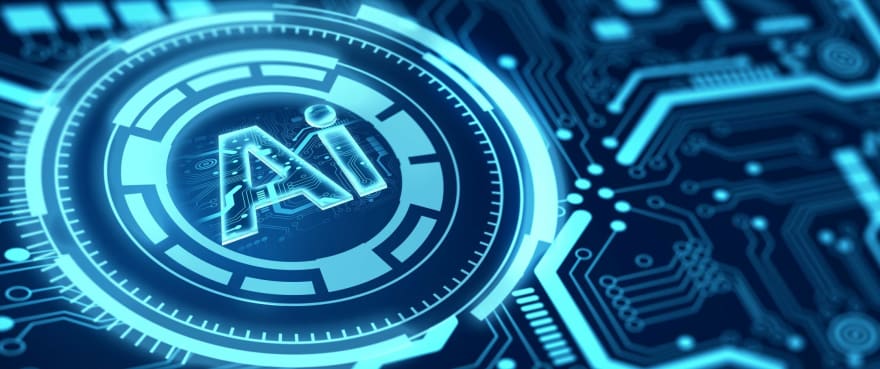What Is Edge AI?
Edge AI refers to the use of artificial intelligence (AI) technology on devices at the edge of a network, rather than in a centralized location such as a data center or the cloud. This allows for real-time decision-making and processing without the need for a constant internet connection or the need to send data back and forth over the network, which can save on bandwidth and latency. Examples of edge AI devices include smartphones, smart cameras, and industrial IoT devices.
How Edge AI Works
Edge AI typically works by using AI models that have been trained and optimized to run on edge devices with limited computational power and storage. These models can be pre-installed on the device or downloaded as needed, and they can be fine-tuned to work with the specific sensor data and environment of the device.
The edge device will collect sensor data, such as images or audio, and then process this data locally using the AI model. This can include tasks such as image classification and labeling, speech-to-text, or anomaly detection. The device can then take actions based on the results of the AI processing, such as sending an alert or controlling a device.
Model monitoring is an essential aspect of Edge AI, as it involves the monitoring and management of machine learning models deployed at the edge. This includes tracking the performance of the model, detecting and diagnosing issues, and making updates or adjustments as needed.
Model monitoring in edge AI includes a variety of tasks such as checking the accuracy and performance of the model, identifying and diagnosing issues, and updating the model's parameters and weights.
Edge AI Application Development: A General Process
Here are the general steps to develop Edge AI applications:
Define the problem and requirements: Clearly define the problem you are trying to solve and the requirements for the Edge AI application. This will help you determine the type of model and architecture that will be needed.
Prepare the data: Prepare the data that will be used to train and test the AI model. This may involve cleaning, normalizing, and pre-processing the data to ensure it is in the correct format for the model.
Train the model: Train the model using the prepared data. This may involve using a cloud-based platform or a powerful local machine to train the model.
Optimize the model: Optimize the model for performance and memory usage. This may involve techniques such as quantization, pruning or distillation to reduce the number of parameters.
Test on target hardware: Test the optimized model on the target hardware to ensure it runs efficiently and effectively. This will help you identify any bottlenecks or issues that may need to be addressed.
Deploy the model: Deploy the model on the edge device, this may involve converting the model to a format that is compatible with the edge device and software development kit.
Integrate with other systems: Integrate the Edge AI application with other systems such as sensors, cameras, and other edge devices to enable real-time decision-making.
Monitor and maintain: Monitor the performance of the Edge AI application and maintain it over time by updating the model and addressing any issues that may arise.
Test and validate: Test and validate the Edge AI application to ensure it meets the desired accuracy and performance.
Best Practices For Developing Edge AI Application
Here are some best practices for developing Edge AI applications:
- Distribute processing: Distribute processing tasks to the edge devices, as well as the cloud, to reduce the amount of data that needs to be transmitted to the cloud. This can help reduce latency and improve overall system performance.
- Optimize for low-power devices: Many edge devices are battery-powered, so it's important to optimize your application for low-power devices. This may involve using techniques such as power management and energy-efficient algorithms to reduce power consumption.
- Use edge-specific protocols: Use protocols that are optimized for edge computing, such as MQTT and CoAP, to minimize data transmission and reduce latency.
- Keep data local: Keep data local as much as possible to minimize data transmission and protect sensitive information. This also can reduce the latency and save on bandwidth costs.
- Use edge gateways: Use edge gateways to manage and coordinate communication between edge devices and the cloud. This can help improve security and reduce the amount of data that needs to be transmitted to the cloud.
- Consider security: Make sure your edge device and application are secure against hacking, data breaches, and other types of cyber threats. Use secure communication protocols and encryption to protect data in transit and at rest.
- Continuously update and maintain: Edge computing applications are never done, it's important to continuously update and maintain the Edge application to improve its performance and security.
- Monitor and collect data: Monitor and collect data from the edge devices to understand their performance and usage, and identify any issues that may need to be addressed.
Conclusion
In conclusion, Edge AI is a rapidly growing technology that allows for real-time decision-making and processing on devices at the edge of a network. The process of developing Edge AI applications involves several steps, including defining the problem, collecting and pre-processing data, selecting and training a model, optimizing the model for efficiency, integrating the model into an edge device, testing and deploying the application, and continuously monitoring and maintaining it.
To ensure the success of an Edge AI application, it is important to follow best practices such as starting with a small, focused problem, optimizing for efficiency, testing on the target hardware, minimizing data transfer, addressing security and privacy concerns, focusing on the user experience and continuously monitoring and improving the application. By following these best practices, developers can create efficient, secure, and user-friendly Edge AI solutions that work well on edge devices.







Top comments (0)